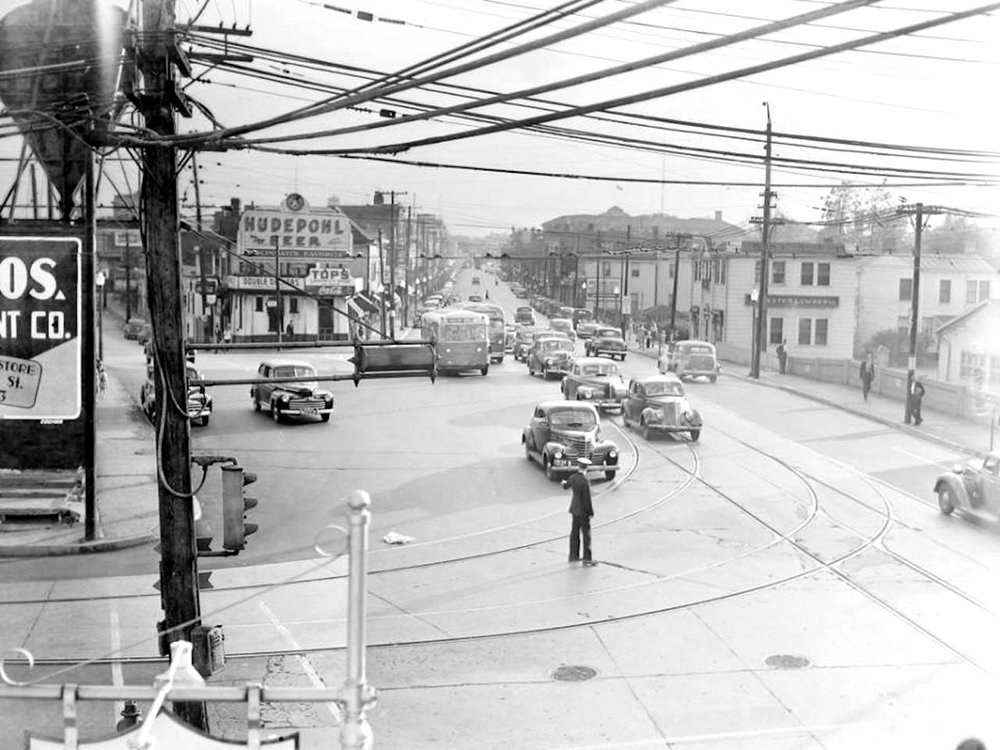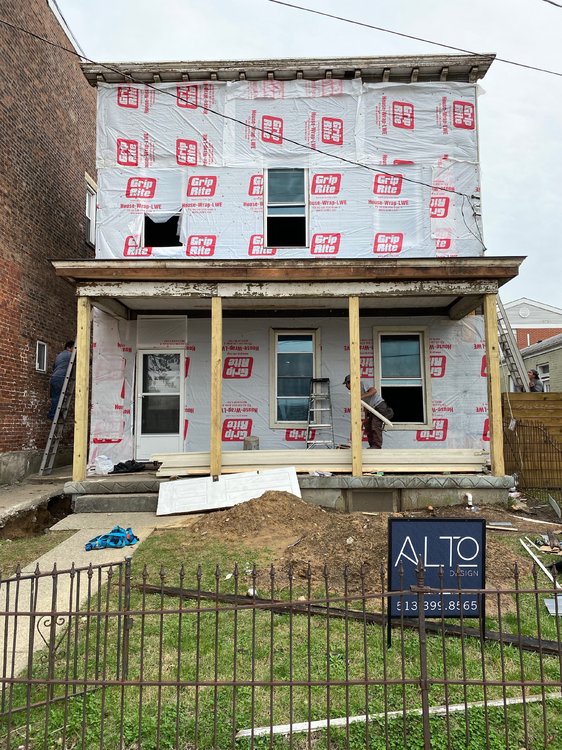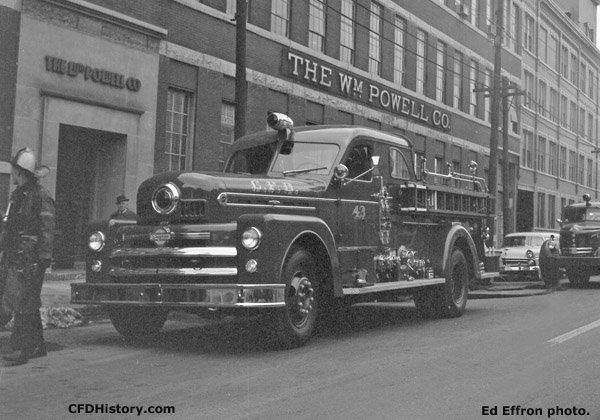Everything posted by jjakucyk
-
Housing Market & Trends
So you're not actually going to address any of my comments, just deflect? I (and likely everyone else) legitimately want to know why you think something is a liability instead of an asset and what should be done about it, how you know for sure that elites aren't having similar effects in other cities, and how you can rationalize your position in the face of contradictory statistics. You need to actually support your arguments instead of resorting to ad hominem attacks. Put up or shut up.
-
Housing Market & Trends
"They say Cincinnati has 'character', 'heritage', 'tradition', ' an intact urban form,' and 'a sense of place' that other cities lack and that these things are to be defended, not questioned." Why shouldn't those things be defended? Are you saying Cincinnati should strive to be characterless, eschew heritage, reject tradition, destroy its urban form, and become placeless? Sure you can make agruments about why heritage and tradition can be problems, especially when so broadly defined, but I look forward to hearing your arguments about why character, intact neighborhoods, and sense of place are problems. "Several here have denied the existence of a local elite, or of any elites anywhere at all." You're the one saying that the the elite don't exist in other cities, supposing that Cincinnati and a few other cities are unique in that respect. Prove that these powerful connected families don't exist in other cities, and I'll name some from Cincinnati that I bet you've never heard of. If there's people here that you don't know about, then how can you possibly know who the key players are or aren't in cities like Minneapolis or Charlotte or Tampa? And as has been pointed out multiple times, nobody says Cincinnati doesn't have elites, but you are overestimating their power in the real estate market. "What data did I provide that didn't show what I thought it did? Being defensive about Cincinnati does it no favors. Shooting the messenger is part of Cincinnati's problem. Taken together, it explains why Cincinnati's housing market under performs so substantially." That, right there. You were shown stats by Gramarye, DEPACincy, and Brutus_buckeye that indicate Cincinnati's housing market is right in line other metros of a similar size and that institutional investors are not looking at Cincinnati any differently than comparably sized metros. Yet you still think it's "substantially underperforming" by some imaginary metric you have yet to articulate.
-
Cincinnati: Downtown: 1010 On The Rhine / Downtown Kroger
And literally surrounded it with loading docks. I've yet to see any use of the open concrete pad (with the clogged trench drain) on Main Street, so why is it even there? This is a completely dead corner across from one of the most active corners downtown.
-
Housing Market & Trends
You are Matt aren't you? How does "most Ohio metros are not really on the radar for institutional capital funding" lead to the conclusion "Cincinnati's elite likes having the Queen City all to itself"? As if Apple or Amazon would relocate their HQ's here, or some large national developer would drop 5,000 apartment units on the city if only we'd just let them.
-
Housing Market & Trends
While Detroit certainly fell hard, it still has more than double Cincinnati's population (and at peak population in the 1950s that difference was nearly 4x), while also having double the land area. So total value is a pretty weak metric to compare, because they can have less than half the per capita or percentage growth and still "win" if you only look at the total.
-
Norwood: Development and News
Oh give me a break. Norwood? A rival to downtown? By the 1920s it had already been mostly built-up with homes and industries. Nothing made it look at all like any sort of potential new commercial node. I don't even think such things even happened in that time period. This was when zoning and master plans were being developed to limit development and redevelopment, not enable them.
-
Cincinnati: Downtown: Convention Center / Hotel
^ But they've already demolished most of what was there.
-
Air Pollution
For as much praise as Ohio has been getting for acting early and aggressively with stay-at-home orders, our streets aren't nearly as empty as that, or what I've seen of New York. Maybe these photos are just a matter of good timing, but Cincinnati feels less like a global pandemic creepy apocalypse and more like just another Sunday.
-
Norwood: Development and News
Basically the east side of Montgomery Road used to be just like the west side until they went all urban renewal on it. There was a relatively unbroken urban commercial corridor all the way from Dana Avenue up to Ross Avenue. They reamed out everything on the east side of the street in the 1970s to build Surrey Square and widen Montgomery Road, which also demolished numerous buildings north of Sherman Avenue (which didn't originally exist east of Montgomery). They basically went all-in on the suburban development pattern and haven't looked back since, unfortunately. This is what Montgomery at Smith and Norwood Avenue looked like in the 1940s: http://www.jjakucyk.com/transit/streetcars-evanston/slides/0010_13118903_1164142883605049_2965232649975106518_n.html And the same location today: https://goo.gl/maps/7Przc4g2pC9jY6xM6
-
Norwood: Development and News
Fixed that for you.
-
Air Pollution
The cold front that swept through last night dropped the relative humidity to near desert levels, so don't discount that as a factor too. Houston has been described as having a white sky, not because of pollution, but because it's so humid.
-
Cincinnati: Pendleton: Development and News
The single-family projects we have under construction or designing/drawing are moving along OK for now. There's been some hiccups with suppliers and subs shutting down or looking for alternate ways to get work done, and good luck if you want the building department to get your permits approved. So far that hasn't impacted schedules TOO much as we haven't had any critical-path items get stalled yet. Jobs that haven't started yet or meetings for proposal and whatnot are all dead in the water though, so nothing new is coming in.
-
US Economy: News & Discussion
That's basically the reason toilet paper is so hard to get right now. Even without hoarding, the demand for consumer TP has still nearly doubled with so many people staying home. The consumer brands had been producing at near capacity already, since there was steady demand and it's a commodity good, so there's little room for overhead and idle production facilities. The suppliers of TP for commercial uses, like schools, offices, hotels, restaurants, stores, etc. can't just shift their production line and supply chain since they use different raw materials and production facilities. Even if you as a consumer want to buy some 12" diameter rolls of commercial TP, they're set up to be moved on pallets using completely different sales, shipping, and delivery logistics. It's a similar case for the foods that are in short supply. With so many restaurants running on fumes at best, their commercial suppliers can't just turn around and dump a two dozen 50lb sacks of flour on Kroger's loading dock. I heard once that many of the local Thai restaurants buy their spring roles pre-made from the same supplier (Jungle Jim's? Do they have a wholesale restaurant supply division?) and they just deep fry them at the restaurant. It's a rather esoteric example sure, but imagine trying to redirect that supply to the direct-to-consumer market. "Sure I can deliver you 10 gross of frozen spring rolls, what's your account number and tax ID?"
-
Amtrak & Federal: Passenger Rail News
^ But if they're empty more than standard seats then that makes them a bigger drag. They're also much more limited in the routes they can be used on, so they're just less flexible in their deployment and utilization. I will say however that a hyper-focus on individual service metrics can still be a mistake. Diners and sleepers on long-distance trains, or owl service on city transit may look like just a loss, rather than a loss leader. But these are the sorts of services that can be absolutely essential to make a round trip viable. In the example of city transit, owl service is not used much, but that can be the only option for someone working an oddball shift. If that one leg isn't available, then the system loses that passenger's daytime leg of the journey as well. Then they're much less likely to use the system for anything else either.
-
Cincinnati: Housing Market / Affordable Housing
Fixing stuff like that is nigh impossible if it's not a gut job. I have a project under construction in Newport right now, and while the foundation is good, the beams and other floor supports are all terrible, so the floors were sagging and crooked. New walls were built under the beams in the basement, and rotted sill beams and studs were replaced. The floors are now stiff and level, but the front door won't open, and the few wall finishes that weren't demo'd basically all exploded as the floors were jacked up. Imagine if all the walls were still plastered, it would be a disaster.
-
Cincinnati: Housing Market / Affordable Housing
Since it's being sold as-is I wouldn't be surprised if there's some lurking structural or foundation issue that's not in the listing but is part of the owner declarations. It looks nice, but the second to last photo of the rear of the house shows some pretty wonky stuff going on with the stucco.
-
Cincinnati: Camp Washington: Development and News
There was probably some library or historical society watermark on the photo and someone just did a very crude copy and paste. Anyway, it does also show what the facade of the Kao building to the right looked like, and which could still be buried under that awful 1960s re-skin. There's a ground level photo from http://www.cfdhistory.com/htmls/company.php?name=43
-
Cincinnati Streetcar / The Connector News
And Paul's departure. But what's the physical reason? Is that paint that was covered only by decals? If so, why were the decals removed?
-
Cincinnati: Downtown: Convention Center / Hotel
The thing is that so much of our economy is based on squeezing out every last tiny fraction of a percent that even 90% of normal can be a crushing blow to a lot of industries. In construction for example, you can have multi tens of million dollar projects where they still scrimp and squeeze on every little detail so they can get that extra 2% out of it. Even if vinyl baseboards, unfinished exposed concrete, and plastic lights aren't going towards a new Alfa Romeo for the developer, tiny fluctuations in interest rates or demand curves are enough for project finances to no longer pencil out. With the way things are going, returning to 80-90% of normal would be a best case scenario, even if it's still objectively a disaster. I guess it's more a question of what outfits will be able to weather the storm long enough to capture that market after all is said and done.
-
Cincinnati: Camp Washington: Development and News
At first glance because of the panorama distortion it looks like the Anchor building up the street. https://goo.gl/maps/1bqPok2g9SuQKc5o7
-
Cincinnati Roundabouts
That could be a case where the street used to end in a cul-de-sac and was later extended through for one reason or another. I know that was the case with Claramont in Oakley: https://goo.gl/maps/3Hr4bXDVZuhXujPT6
-
Cincinnati Roundabouts
No, a mini roundabout is one that's plopped within an existing intersection, generally with no other modifications. They can be fully mountable if trucks or buses need to make turns. They're also called neighborhood traffic circles. http://calmstreetsboston.blogspot.com/2012/04/modern-day-roundabouts-and-neighborhood.html
-
Cincinnati Roundabouts
Mini roundabouts would be good "tactical urbanism" projects. A planter box, some paint, and a few signs is all it would take. I don't think McMicken/Ravine is the place for something like that though, because of the geometry. Mini roundabouts tend to be found at 90-degree 4-way stops in residential neighborhoods with little truck or bus traffic. I don't really have any ideas off the top of my head for that intersection, but some curb bump-outs and turn restrictions might be the low-hanging fruit there.
-
Cincinnati: Western Hills Viaduct
No I'm saying without the rail yards it could just be a surface street, kind of like Gest, or Hopple between Spring Grove and I-75. The whole point of the viaducts was to cross the many railroads and yards, not so much for topography. There'd still be a bridge over Mill Creek, and a couple of railroad overpasses, but nothing like what's there now. I know it's a complete pipe dream.
-
Cincinnati: Camp Washington: Development and News
In a case like this I wouldn't be opposed to a facadectomy. Keep the street wall and windows, but demolish everything behind it. Of course then they'll probably complain that the floor plates wouldn't line up, and something-something brand image, something-something.








